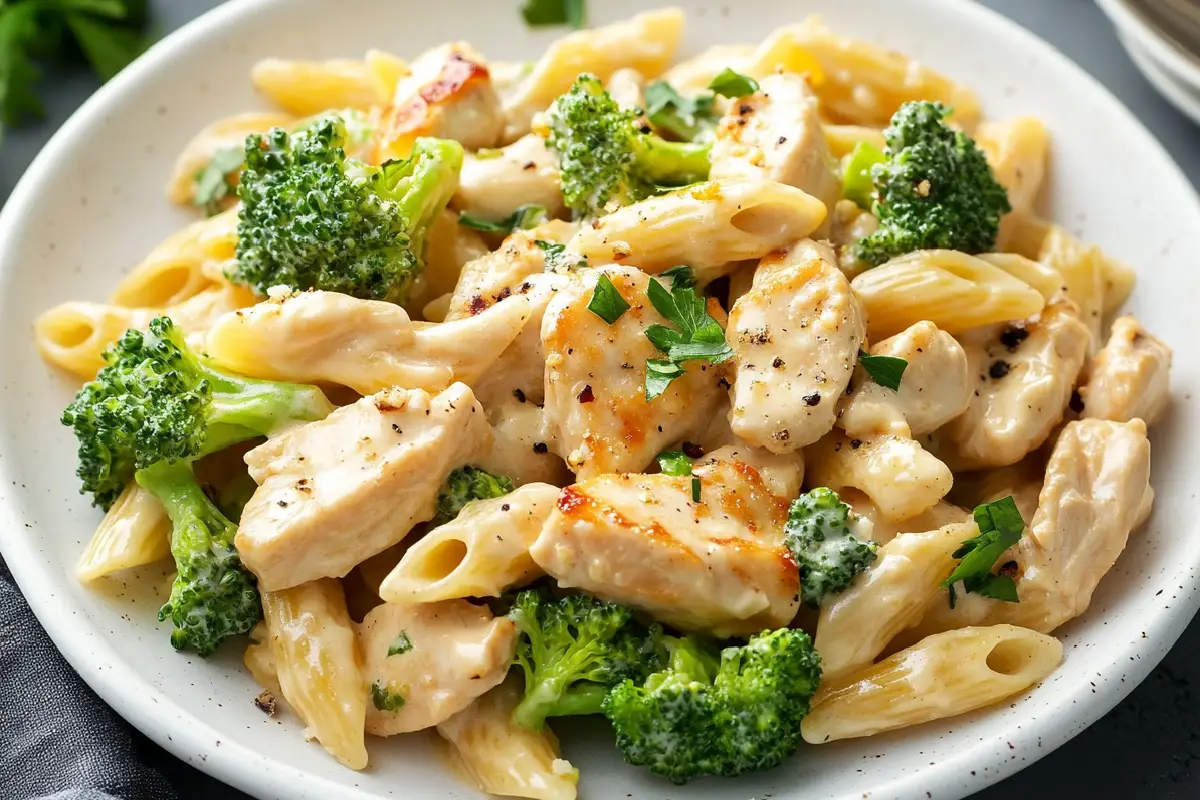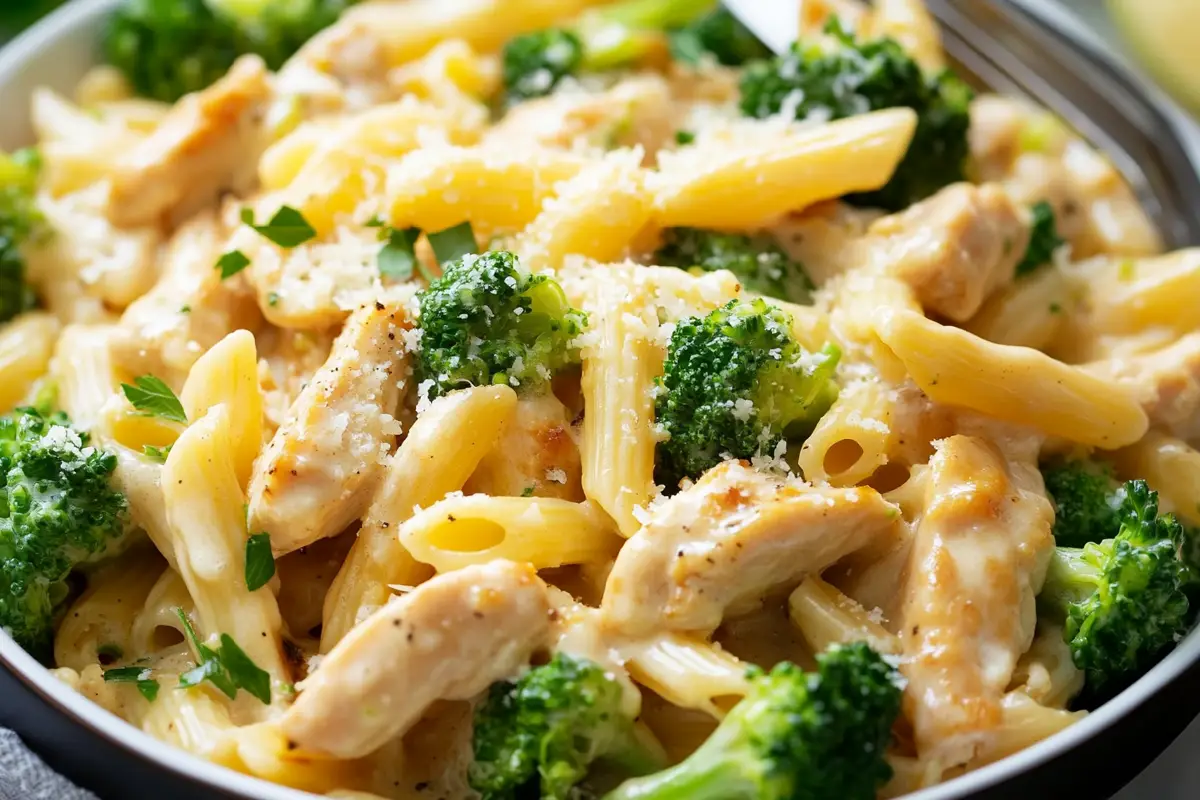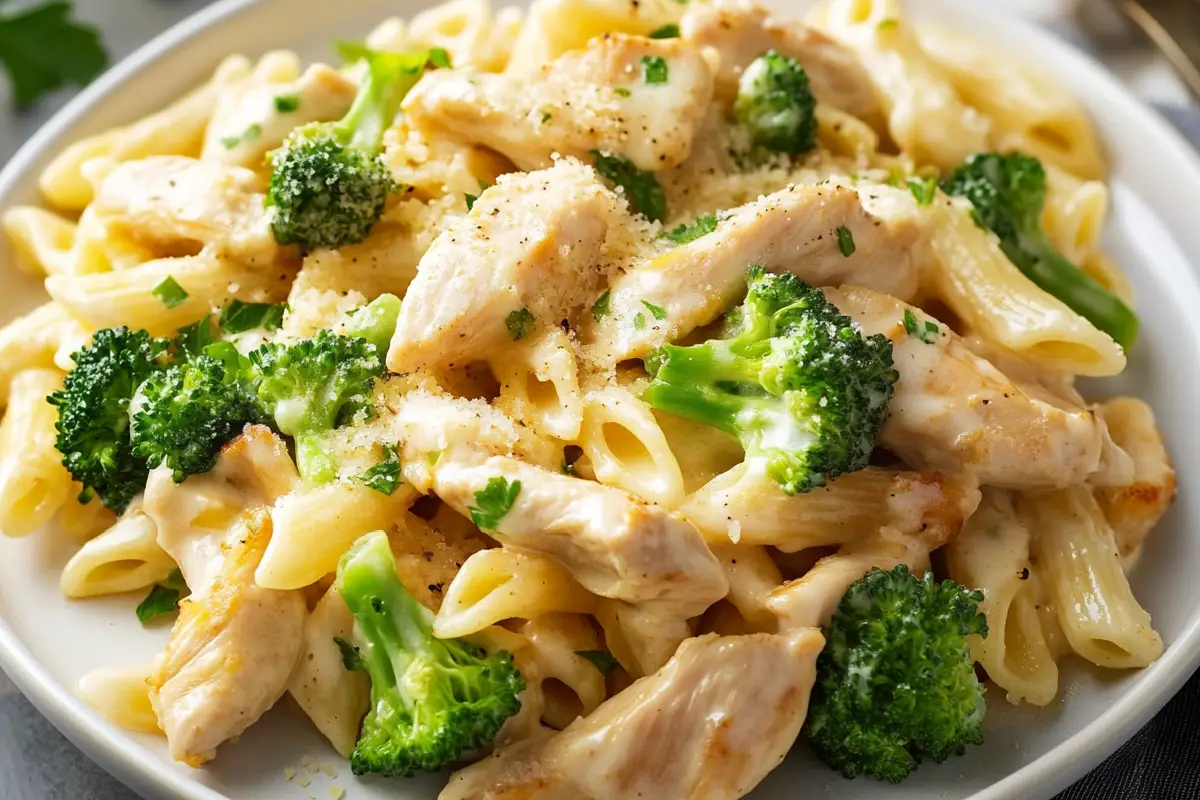Introduction to Is it OK to Boil Broccoli in Pasta Water
Boiling broccoli in pasta water is a technique that has been debated among home cooks and chefs alike. It’s a simple solution that saves time and cuts down on the number of dishes to wash, but there are concerns about whether it impacts the flavor, texture, or nutritional content of the ingredients. Does boiling both together enhance the dish, or does it degrade the quality of either the pasta or the broccoli? Let’s explore the pros and cons of boiling broccoli in pasta water and how to do it correctly.
Why People Consider Boiling Broccoli in Pasta Water
For many busy home cooks, the idea of boiling broccoli and pasta together is appealing. The most obvious reason is the simplicity:
- Time-saving: You only need one pot, which means the entire cooking process is more streamlined.
- Energy efficiency: With just one burner needed, this method saves energy.
- Flavor enhancement: By boiling broccoli in pasta water, the starchy water can coat the vegetable, creating a slightly richer flavor profile.
This technique is also widely used in traditional Italian cuisine. For example, the Sicilian method involves cooking vegetables like broccoli and pasta in the same pot, often with the addition of spices and herbs to elevate the overall taste. In this method, both pasta and vegetables like broccoli are cooked together for the purpose of creating a richer, more flavorful dish.
But while it’s convenient, some wonder if it’s really the best way to prepare broccoli and pasta together. Let’s dig deeper into the science behind this method.
The Science Behind Boiling Vegetables and Pasta Together

Understanding how each ingredient cooks is crucial to getting the best results. Pasta typically takes around 8-12 minutes to cook, depending on the type and thickness. On the other hand, broccoli cooks much faster, usually needing just 3-5 minutes in boiling water to reach the perfect balance of tenderness and flavor.
One key concern about boiling broccoli in pasta water is the potential loss of nutrients. Like most green vegetables, broccoli contains water-soluble vitamins like Vitamin C and B vitamins. According to a study by Food Doodles, boiling broccoli for too long can cause these nutrients to leach into the water and be discarded when the pot is drained.
However, if the cooking process is timed well, you can retain the texture and nutritional value of both ingredients. Adding the broccoli towards the end of the pasta’s cooking time ensures that both the pasta and the broccoli finish cooking at the same time, avoiding overcooking either component.
The Role of Starchy Water in Cooking Broccoli
When pasta cooks, it releases starches into the boiling water. These starches can be beneficial in adding body to sauces, and some of this starchy water can also coat the broccoli. The result is a more cohesive flavor between the two ingredients. This is one of the main reasons why home cooks and chefs alike choose to cook them together.
However, too much starch can sometimes lead to an overly thick sauce or a gummy texture. This is why it’s important to use enough water for both the pasta and the broccoli, ensuring that there’s enough room for each to cook properly.
Advantages of Cooking Broccoli in Pasta Water
Let’s break down the specific benefits of cooking broccoli in pasta water:
1. Time Efficiency
Perhaps the most obvious advantage is that you save time by boiling both in the same pot. If you’re in a rush or cooking on a busy weeknight, this method eliminates the need to juggle multiple pots and pans. You can focus on preparing other components of your meal or simply enjoy the ease of a one-pot dish.
2. Energy Efficiency
Since you’re using just one burner, this method is also more energy-efficient. You’re conserving not just your time but also reducing energy consumption, which is especially useful when preparing a large family meal.
3. Flavor Infusion
The starchy water from the pasta adds a subtle depth of flavor to the broccoli. The starch coats the vegetables, giving them a slightly richer texture and a flavor that blends seamlessly with the pasta. This is particularly beneficial when you plan to toss everything together in a sauce.
For example, when making Broccoli Alfredo, boiling the broccoli in pasta water allows the broccoli to absorb some of the pasta’s richness, which makes the entire dish more flavorful.
4. Less Cleanup
Using just one pot means fewer dishes to clean. If you’re someone who dislikes dishwashing (and let’s face it, most of us do), this is a huge advantage. You can have a nutritious meal without worrying about scrubbing multiple pots and pans afterward.
5. Perfect Pairing in Pasta-Based Dishes
Dishes like Chicken and Broccoli Pasta benefit greatly from this method because the two ingredients are meant to be served together. By cooking them in the same water, you’re setting yourself up for a dish where the components work harmoniously together in both flavor and texture.
Potential Downsides of Cooking Broccoli in Pasta Water
While the benefits are clear, there are also a few downsides to consider:
1. Nutrient Loss
As mentioned earlier, overcooking broccoli can result in the loss of vital nutrients, especially water-soluble vitamins like Vitamin C. Boiling broccoli for too long will allow these nutrients to leach into the water. If you’re draining the water afterward (as most people do when making pasta), you’re also discarding these nutrients.
2. Texture Concerns
It’s important to get the timing right. Broccoli only needs 3-5 minutes in boiling water, while pasta can take much longer. If you add the broccoli at the same time as the pasta, you may end up with mushy vegetables, which is less than ideal.
One way to avoid this is to add the broccoli later in the cooking process, timing it so that the pasta finishes cooking just as the broccoli reaches the perfect texture.
3. Cross-Contamination of Flavors
Broccoli can have a strong, slightly bitter flavor, especially when boiled. If you’re cooking a delicate dish like Pasta Alfredo or something similar, you might find that the broccoli flavor overpowers the more subtle flavors in the dish. This can be avoided by carefully balancing the cooking time or opting to blanch the broccoli in a separate pot and adding it later.
How to Properly Boil Broccoli in Pasta Water
So how do you boil broccoli in pasta water without ruining the dish? Here’s a step-by-step guide to ensure success:
1. Use a Large Pot
Make sure to use a large enough pot to accommodate both the pasta and the broccoli. If the pot is too small, the water will become overly starchy, leading to gummy pasta and overcooked broccoli.
2. Boil the Pasta First
Start by cooking the pasta as you normally would. Bring a large pot of salted water to a rolling boil and add your pasta of choice. Remember that different types of pasta will have different cooking times, so adjust accordingly.
3. Add the Broccoli Toward the End
Once the pasta is about 2-3 minutes away from being perfectly cooked, add the broccoli florets. The broccoli will need only about 3-5 minutes to become tender, which should align with the pasta finishing cooking.
4. Drain Together
When both the pasta and broccoli are cooked to your liking, drain them together in a colander. Be sure to save some of the pasta water if you plan to use it for sauce-making, as the starchy water can help thicken the sauce and bind the dish together.
5. Toss with Sauce or Seasoning
Once drained, toss the pasta and broccoli with olive oil, garlic, or your favorite sauce. You can also season with salt, pepper, and Parmesan cheese for a simple yet delicious meal. This method works particularly well with recipes like Chicken Casserole with Pasta and Broccoli, where both components benefit from being cooked together.
Alternative Methods for Cooking Broccoli and Pasta
If you’re not sold on the idea of boiling broccoli in pasta water, there are alternative methods you can try:
1. Blanching Broccoli Separately
If you want to retain the nutrients and texture of your broccoli, consider blanching it in a separate pot. This involves briefly boiling the broccoli for 2-3 minutes and then transferring it to an ice bath to stop the cooking process. This method preserves the vibrant color and crisp texture of the vegetable, and you can then toss it with the pasta once both are done.
2. Steaming Broccoli
Steaming is another excellent method for cooking broccoli. It allows you to preserve more nutrients compared to boiling. Simply place the broccoli in a steamer basket over a pot of boiling water and steam for about 4-5 minutes. Once done, toss it with the pasta and sauce for a healthier option.
3. Roasting Broccoli
For a more flavorful alternative, consider roasting broccoli. Toss the florets in olive oil, salt, and pepper, and roast them in the oven at 400°F (200°C) for about 20 minutes until they’re crispy and caramelized. Roasting brings out the natural sweetness of broccoli and adds a delightful crunch to your pasta dishes.
FAQs about Is it OK to Boil Broccoli in Pasta Water

Can You Cook Broccoli and Pasta Together in the Same Water?
Yes, you can cook broccoli and pasta together in the same pot of water. However, to avoid overcooking the broccoli, it’s important to add it toward the end of the cooking process. This ensures that both ingredients are perfectly cooked without sacrificing texture or flavor.
Is It Healthy to Boil Broccoli?
Boiling broccoli is a healthy cooking method, but keep in mind that boiling for too long can result in nutrient loss. For better nutrient retention, limit the boiling time to just a few minutes. Alternatively, steaming or roasting broccoli may be better options if you’re concerned about preserving vitamins and minerals.
Does Boiling Broccoli Remove Nutrients?
Yes, boiling broccoli for too long can remove water-soluble vitamins like Vitamin C. To minimize nutrient loss, aim to cook the broccoli for just 3-5 minutes, or consider using alternative methods like steaming or roasting.
What Are Some Recipes That Use This Method?
There are plenty of delicious recipes that make use of the technique of boiling broccoli in pasta water. One popular option is Chicken and Broccoli Pasta, where the broccoli and pasta are cooked together, then tossed with a creamy sauce and tender pieces of chicken. Another great dish to try is Broccoli Alfredo, where both ingredients are combined with a rich, garlicky Alfredo sauce for a comforting and satisfying meal.
Conclusion
Boiling broccoli in pasta water is a convenient and time-saving method that can simplify meal prep, especially when making one-pot dishes. While it has its benefits in terms of flavor and efficiency, there are some potential downsides, including nutrient loss and the risk of overcooking. By following the right timing and technique, however, you can enjoy the best of both worlds: perfectly cooked pasta and tender, flavorful broccoli.
Whether you’re preparing a simple weekday dinner or experimenting with new recipes like Chicken Ricotta Meatballs, this method can be a helpful tool in the kitchen. Just be sure to balance your cooking times, and you’ll have a delicious, nutrient-packed meal ready to enjoy!

